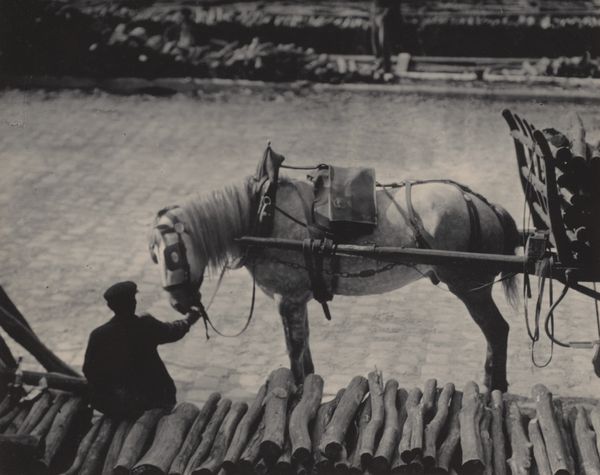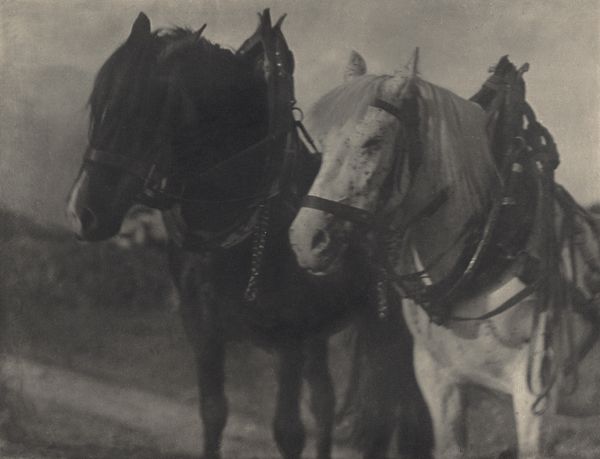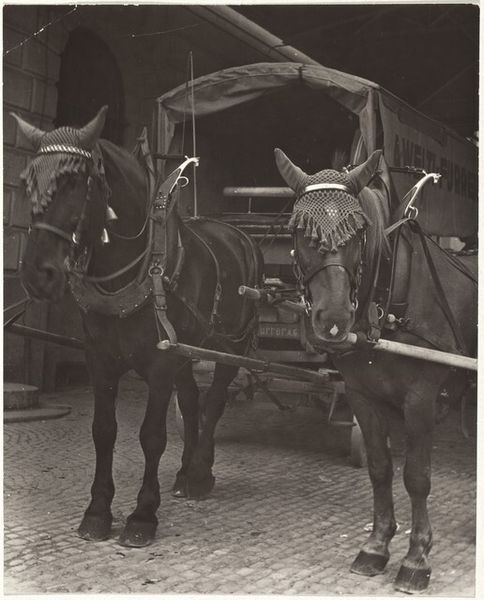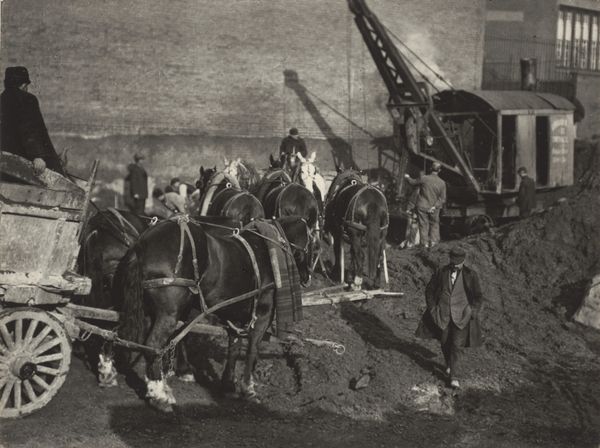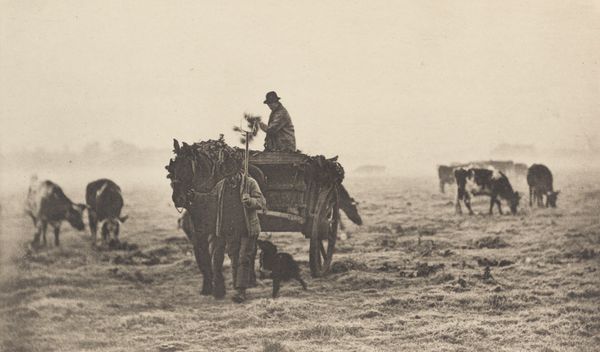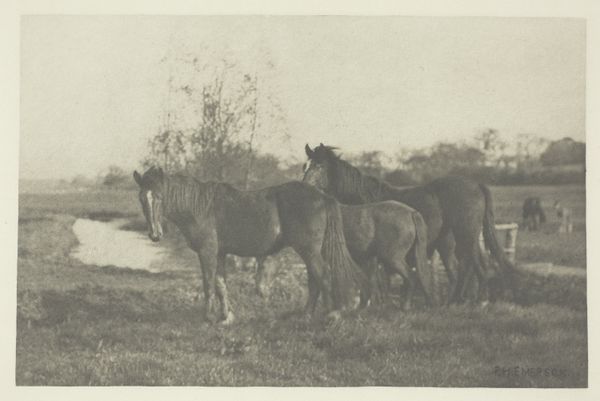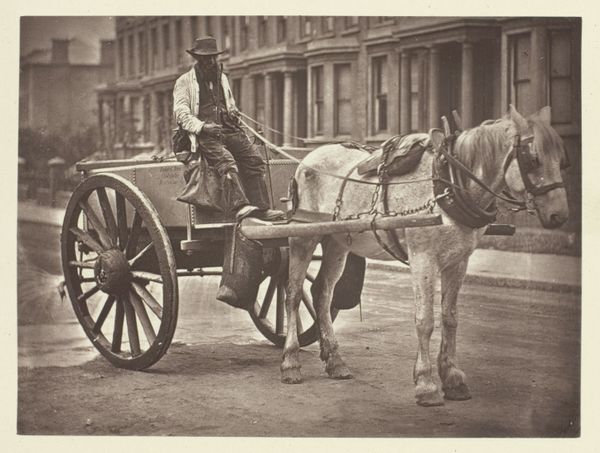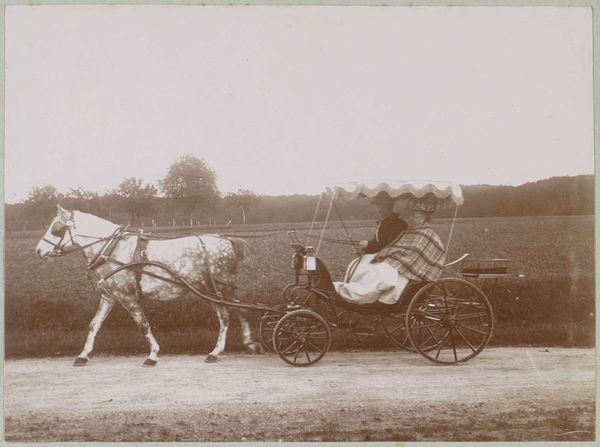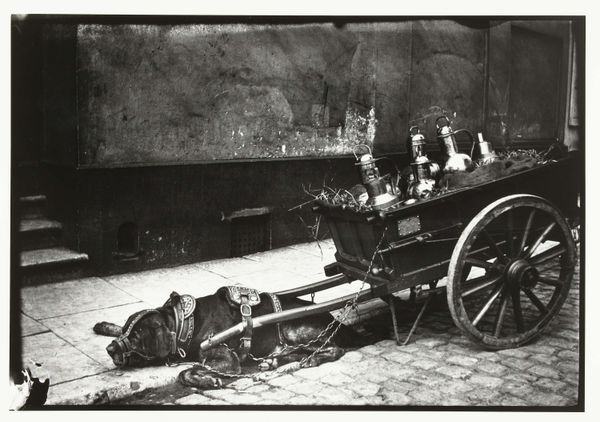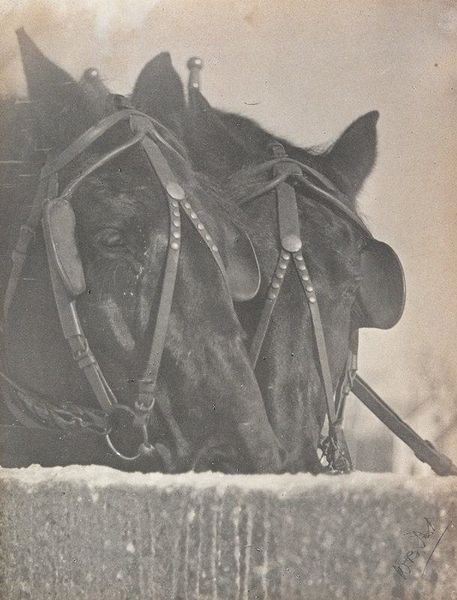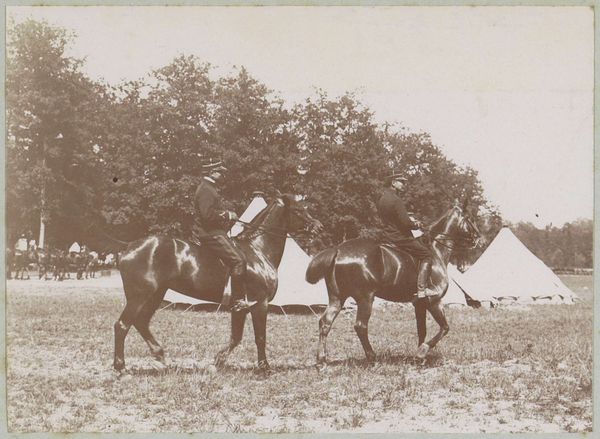
photography, gelatin-silver-print
#
black and white photography
#
landscape
#
monochrome colours
#
street-photography
#
photography
#
black and white
#
gelatin-silver-print
#
monochrome photography
#
ashcan-school
#
monochrome
#
realism
#
monochrome
Dimensions: sheet (trimmed to image): 9 × 11.1 cm (3 9/16 × 4 3/8 in.)
Copyright: National Gallery of Art: CC0 1.0
Editor: This gelatin silver print, "A Snapshot, Paris," is possibly from between 1911 and 1934 by Alfred Stieglitz. It’s a very still, quiet scene. The contrast between the logs and the cobbled street gives it a nice texture. What stands out to you when you look at this work? Curator: Immediately, I’m drawn to the animal figures within this street scene – the horse and the dog, poised alongside the resting human figure, all amidst stacks of logs. These evoke archetypal symbols. Consider the horse; it’s been a consistent symbol of labour, strength, but also freedom throughout human history. Editor: I hadn’t thought about the horse that way, more like a beast of burden. Curator: Indeed, it’s both. Think of mythology: Pegasus. But here, tethered in Paris, it represents constrained power. And the dog? Loyalty, certainly, but perhaps also a vulnerability, emphasized by its small size and shadowed presence near the massive horse. The logs themselves, neatly stacked, point to resources, labor, but also potentially to warmth and shelter – basic human needs. Are these ideas of connection, need and status too forced? Editor: I don’t think so. It makes me wonder about the relationship between the figures. The person and the horse work together, and the dog just watches over the scene. Curator: Exactly. And by capturing this transient, working tableau, Stieglitz preserves a fragment of Parisian life and universal themes of work, companionship, and our relationship with nature. What have you gleaned? Editor: Seeing the familiar in symbolic terms brings new depths. I think I'll keep that in mind when I look at other art, too. Curator: Excellent. Recognizing that images have power to trigger our memories and carry meaning allows a deeper appreciation for Stieglitz and those who consider the continuity of symbols across time and space.
Comments
No comments
Be the first to comment and join the conversation on the ultimate creative platform.
